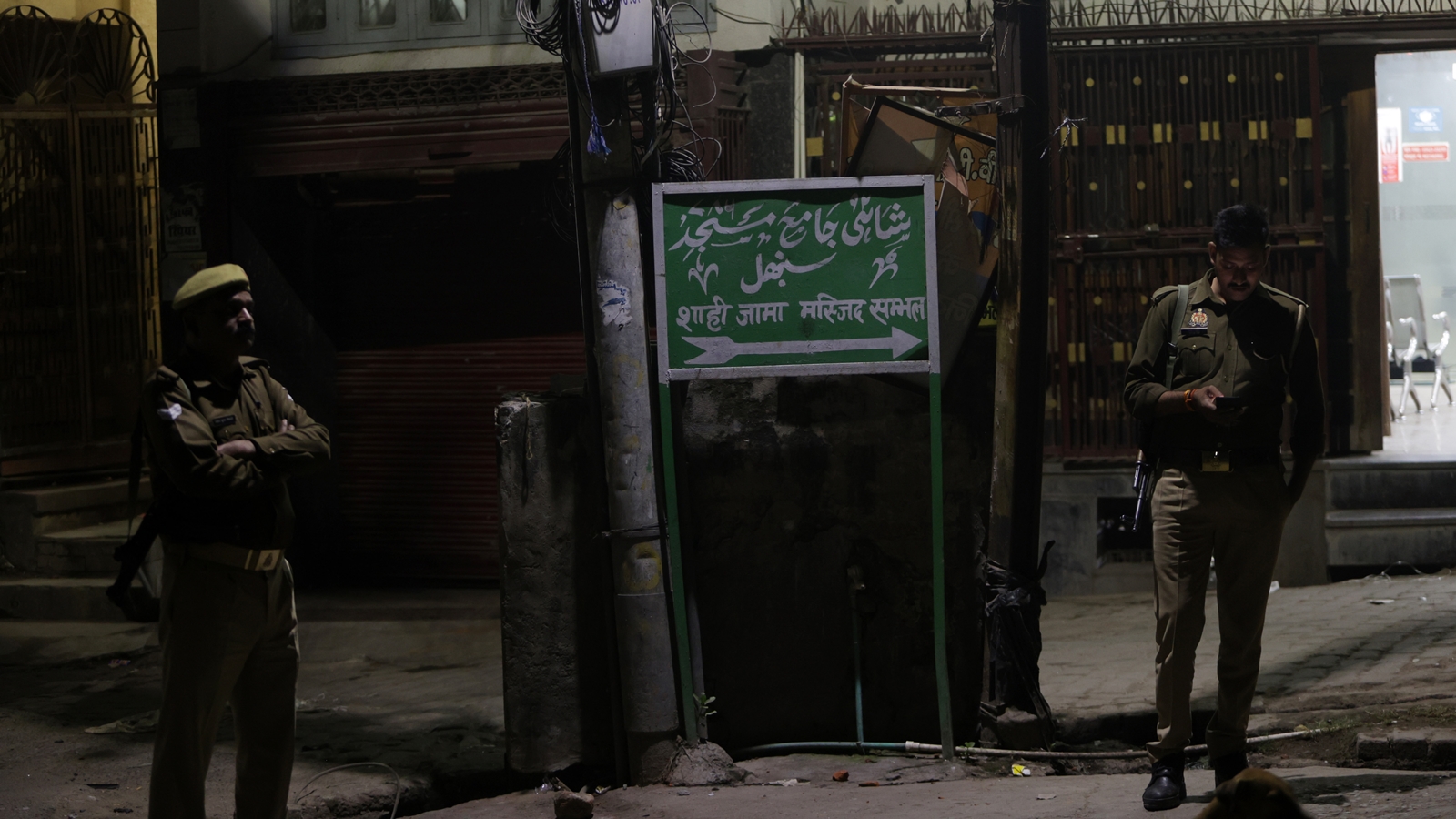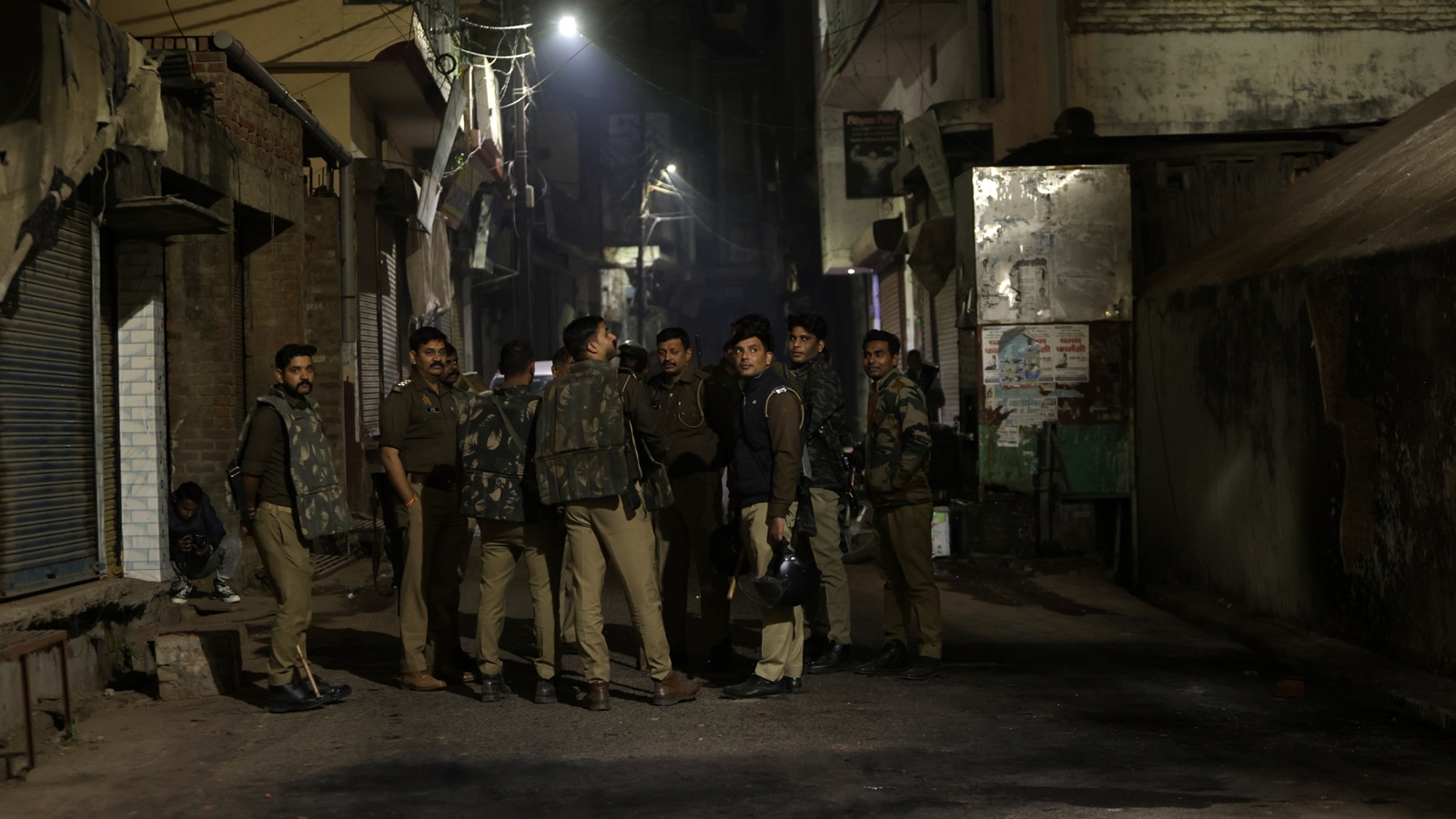Nearly a week after a district court in Sambhal ordered a survey of the Shahi Jama Masjid, the town in western Uttar Pradesh has been rocked with violence that has left at least four dead and several others injured.
The court’s order came in a plea which claimed that Sambhal’s Jama Masjid was built on the site of a Hindu temple. This is similar to claims made in the cases of Gyanvapi mosque in Varanasi, the Shahi Idgah in Mathura, and the Kamal-Maula mosque in Madhya Pradesh’s Dhar.

The claims in all of these disputes essentially seek to change the religious character of a place of worship, something that is prohibited by the Place of Worship Act, 1991.
What did the court order say? Why did it spark protests in Sambhal?
On November 19, Aditya Singh, civil judge (senior division), of the District And Sessions Court of Sambhal at Chandausi allowed an application filed by advocate Hari Shankar Jain and others, including a local mahant, claiming the right to access the mosque. The petitioners allege that the mosque was built in 1526 by Mughal emperor Babur after demolishing a Hindu temple that stood there.
Within hours of the plea being filed, the court issued an order appointing an advocate commissioner to carry out an initial survey at the mosque. The first survey was carried out on the very same day. The court also ordered that a report of the survey be filed before it by November 29.
 Policemen on guard near Shahi Jama Masjid in UP’s Sambhal following the clashes on Sunday. (Express photo by Gajendra Yadav)
Policemen on guard near Shahi Jama Masjid in UP’s Sambhal following the clashes on Sunday. (Express photo by Gajendra Yadav)
A second leg of the survey took place on November 24. This led to protests breaking out in Sambhal, and the police subsequently opening fire.
While the mosque’s managing committee was consulted for the survey, the court’s order seeking a survey report by November 29 was passed ex-parte, that is, without hearing both parties.
Story continues below this ad
Sambhal’s Jama Masjid is a “protected monument”, having been notified on December 22, 1920 under the Ancient Monuments Preservation Act, 1904. It has also been declared as a Monument of National importance, and figures on the website of the Archaeological Survey of India in the list of centrally protected monuments.
What does the law say about the petitioners’ claim?
A civil suit filed by the petitioners is essentially a case for the court to determine the title of the property in question. In a civil suit, averments made by the petitioners are to be prima facie accepted. The Code of Civil Procedure bars a strict scrutiny of the claims made in a civil suit at the initial stage. Petitioners are called upon to bring evidence to the table only once the plea is accepted.
However, when it comes to a place of worship, such a suit would be barred under the Places of Worship Act, 1991.
That said, in both the Gyanvapi and Mathura cases, district courts have accepted the civil suits filed by Hindu petitioners as “maintainable”, meaning that they are valid cases for determination, despite the 1991 Act. The courts have essentially ruled that these cases fall beyond the purview of the 1991 Act.
Story continues below this ad
 Moradabad Divisional Commissioner Aunjaneya Kumar Singh said the three who were killed sustained bullet injuries during the clashes.
Moradabad Divisional Commissioner Aunjaneya Kumar Singh said the three who were killed sustained bullet injuries during the clashes.
What does the Places of Worship Act, 1991 say?
The Places of Worship Act states that the religious character of any place of worship as it existed on August 15, 1947, must be maintained.
The long title describes it as “An Act to prohibit conversion of any place of worship and to provide for the maintenance of the religious character of any place of worship as it existed on the 15th day of August, 1947, and for matters connected therewith or incidental thereto.”
Section 3 of the Act bars the conversion, in full or part, of a place of worship of any religious denomination into a place of worship of a different religious denomination — or even a different segment of the same religious denomination.
The law, which had been a part of the Congress’ 1991 election manifesto, was meant to put to bed all controversies arising out of the alleged historical “conversion” of a place of worship. While introducing it in Parliament, then Home Minister S B Chavan had said that the “enactment of this Bill will go a long way in helping restore communal amity and goodwill”.
Story continues below this ad
While the Act came in the light of the Babri Masjid-Ram Janmabhoomi dispute, this was specifically kept outside its purview as since the dispute was already sub-judice when the law was passed.
How have courts then allowed these title suits?
The title suits, or suits claiming access or the right to worship in Varanasi and Mathura, have essentially been allowed even as a constitutional challenge to the 1991 Act is pending before the Supreme Court.
The apex court currently has before it four separate petitions challenging the Places of Worship Act. In September 2022, a Bench headed by then Chief Justice of India UU Lalit had directed the government to file a response on its stand within two weeks. However, two years on, the Centre is yet to file its affidavit.
But a separate observation by the Supreme Court in the Gyanvapi case has allowed more room for district courts to allow such pleas.
Story continues below this ad
In May 2022, Justice DY Chandrachud had said that although changing the nature of the religious place is barred under the 1991 law, the “ascertainment of a religious character of a place, as a processual instrument, may not necessarily fall foul of the provisions of Sections 3 and 4 (of the Act)…”
This essentially means that an inquiry into what the nature of the place of worship was on August 15, 1947 can be allowed, even if that nature cannot be subsequently changed.
Both in the Mathura and Gyanvapi cases, the Masjid side has challenged this interpretation of the Places of Worship Act. The Supreme Court is yet to hear final arguments to decide this preliminary issue of whether the 1991 Act bars even the filing of such a plea, or just the final change of the nature of worship.
In the Sambhal case, things have moved very fast. The district court is yet to even pass an order on the maintainability of the civil suit. The survey order came at the first instance, before a preliminary finding was reached that the Hindu side had a maintainable claim. The order was implemented before the parties had an opportunity to challenge it before the High Court.



 Policemen on guard near Shahi Jama Masjid in UP’s Sambhal following the clashes on Sunday. (Express photo by Gajendra Yadav)
Policemen on guard near Shahi Jama Masjid in UP’s Sambhal following the clashes on Sunday. (Express photo by Gajendra Yadav) Moradabad Divisional Commissioner Aunjaneya Kumar Singh said the three who were killed sustained bullet injuries during the clashes.
Moradabad Divisional Commissioner Aunjaneya Kumar Singh said the three who were killed sustained bullet injuries during the clashes.



































